| We crossed the Iowa/Illinois border at the Mississippi River and
the area known as Quad Cities which comprises Davenport and Bettendorf in Iowa
and Moline and Rock Island in Illinois. Moline is the home of a major American
icon - the John Deere tractor. So we stopped to look. There are several
buildings and factories including a display centre in the middle of Moline.
Here we found a collection of new-looking but old tractors. This 4010 is probably
the standard tractor of the post war era. | 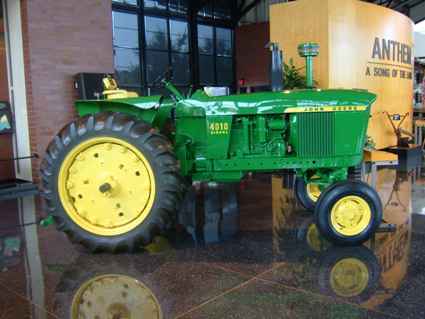 |
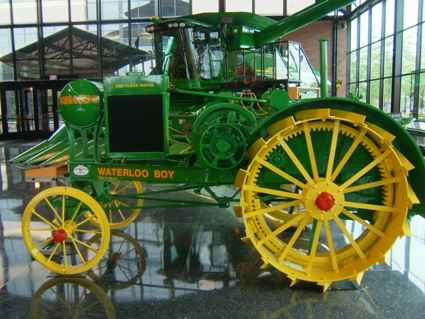 | This was one of
the first designs in 1912 when John Deere took over the Waterloo Gasoline
Tractor Co. John Deere was originally a blacksmith who developed a self
cleaning ploughshare in 1837. |
| This is one of the most up to date combine harvesters which could
cost up to $350,000, just for the vehicle and power production bit. And they make and sell hundreds as we were to see when
we visited the factory. | 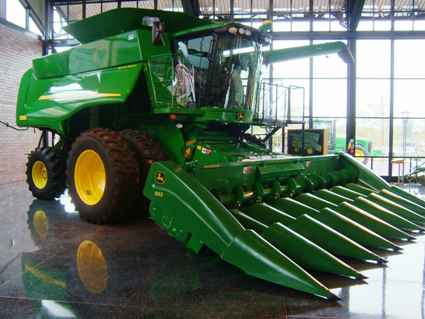 |
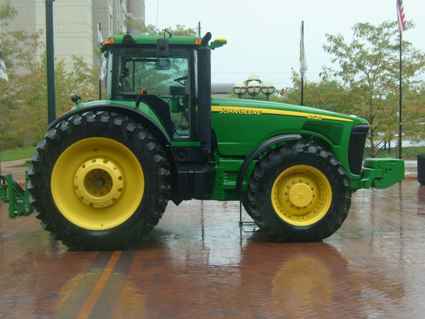 | On display
outside (in the pouring rain) was one of the larger modern tractors in the
traditional John Deere green and yellow. Next door was the company shop
where you could buy all sorts of merchandise from hats to toys to a set of
John Deere tractor fairy lights! |
| But across the road in an old dealership was the John Deere
collectors' centre where you could buy bits to help renovate your old
'collectable'. Most of these tractors were owned by somebody who had
renovated them and then loaned them to the museum. The display changes quite
regularly. This one probably dates from the 50s. | 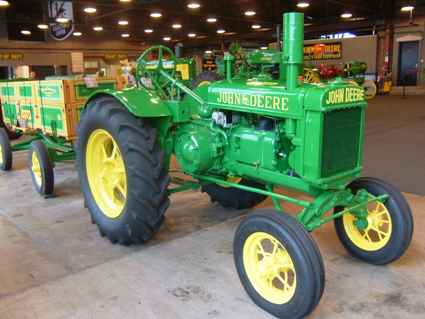 |
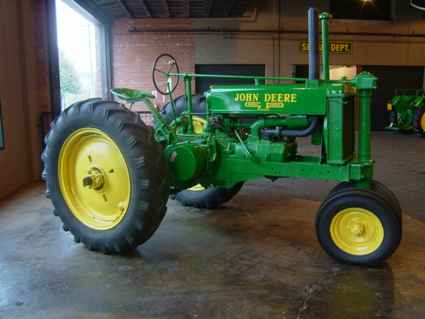 | This was much
older with the close set front wheels dating from the Second World War. This
seems to be a uniquely US style of tractor. |
| There was a relatively rare caterpillar tracked tractor. This
probably also dates from the early 50s. It had a disc harrow on the back. | 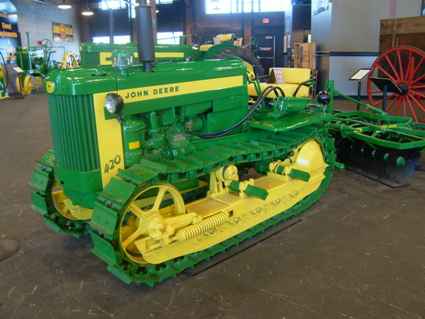 |
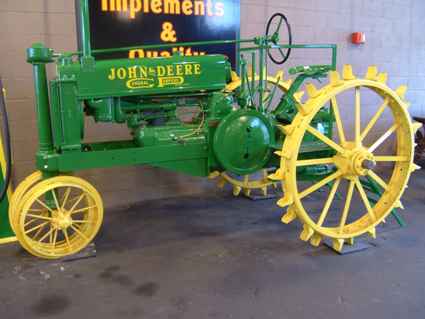 | This was much
older, when pneumatic tyres were not yet in use and probably dates to the
early 20s. Note the twin wheels at the front again. |
| Some tractors were also built with high clearance so they could
ride over the crops. They were still using tractors like this in parts of
California and probably other States also. | 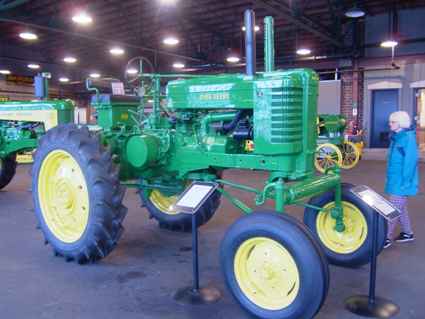 |
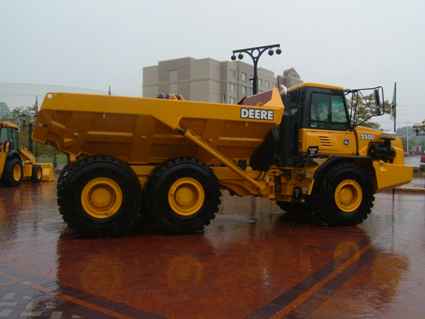 | They also make
earth moving and construction equipment like this dump truck. I guess it is
another division because they get yellow paint instead of green. When also
saw graders and buckets etc. There was even a JCB style unit at the back. |
| Then we went to the harvester factory for a visit. At first we
thought this was the room we were to go in but it turned out to be the
training room. Those consoles were pretty amazing. The seats were very
comfortable and you control the whole unit with the yellow joystick. There
must have been 40 seats there. | 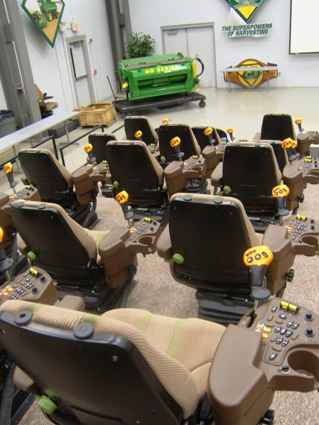 |
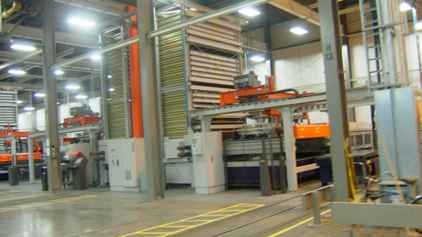 | The factory was
very high tech. This is one of several multi unit laser cutters which cuts
up to 1 inch steel plate without burrs. You can stack them up with material
and they will run for three days unattended. |
| This was one of many steel benders and presses which shape the
steel plates. They used to buy their steel by the roll but now they buy
smaller more manageable plates. | 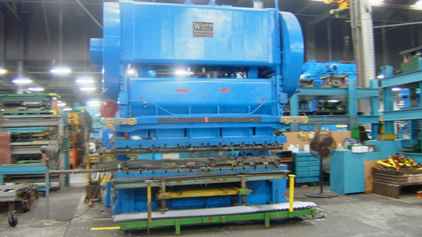 |
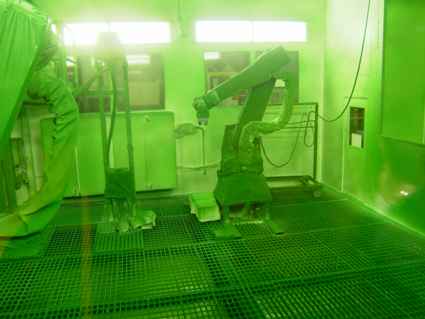 | There is a two-stage painting process which we viewed in reverse order. This was the shop
where four robots (at $2million each) spray 1mm of high gloss polyurethane
paint on the entire harvester section. The overspray is collected underneath
in a water bath but cannot be recycled. The picture is green because you can
have any colour you like so long as it is green. |
| The other side of the unit was where the initial coat of water
based paint is electro-coated onto the component assembly. This was a complex
13 bath process which degreased, cleaned and painted the section. Each of
the baths contains over 50,000 gallons and excess paint is recycled and
reused. Even the cleaning water is treated. Some of these sections weigh up
to eight tons. The whole process is automated. Painting occurs about halfway
through the assembly process. | 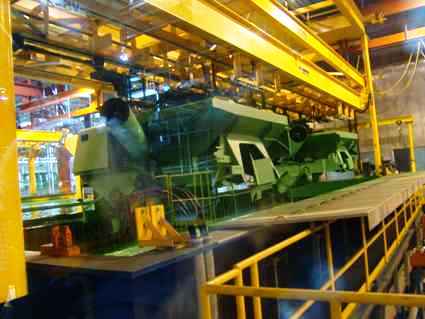 |
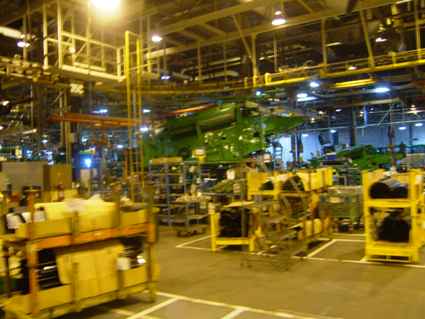 | This was out on
the main assembly line. Harvesters are very complex pieces of machinery and
the thought which has gone into the design and the production process was
truly amazing. |
|